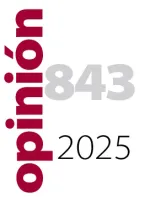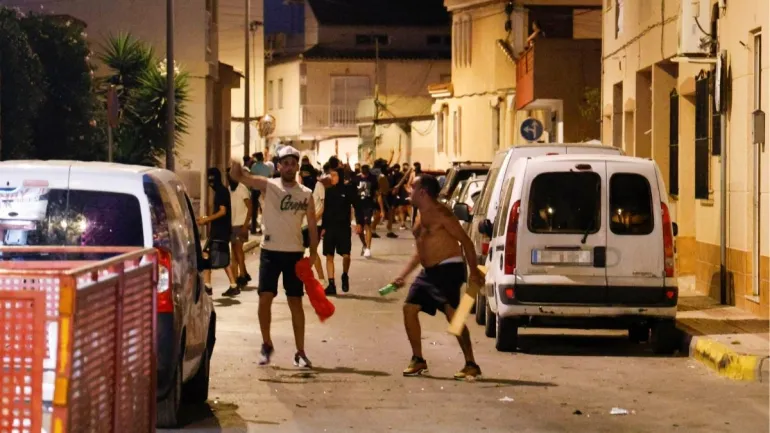Torre Pacheco: a Molotov cocktail announced


This text was previously published in ARA newspaper.
In mid-July 2025, following the assault of a local resident by a young man of Moroccan origin in Torre Pacheco, several days of xenophobic disturbances broke out, largely encouraged through social media by extreme right groups that had arrived from different parts of Spain. While most analyses have focused on the responsibility and impunity with which these groups operate, this article argues that we must go further, paying attention to a combination of flammable elements that were present for some time at the local context.
The recent immigrant riots in Torre Pacheco are yet another example of the destructive power of hate speech promoted by the far right and fuelled by social media. Cases are multiplying across Europe: in recent months alone, extremely violent xenophobic riots have occurred in the United Kingdom, Ireland, France, Germany, and Italy. Yet it would be a mistake to think that the far right is the only one to blame. Torre Pacheco is the result of a Molotov cocktail that has been simmering for years.
The first flammable ingredient in this cocktail is economic. With the creation of a single European market in the 1990s, Torre Pacheco became the capital of the export-driven agro-industrial economy in the Campo de Cartagena region. Alongside Almería and Huelva, it forms part of the Made in Spain agricultural brand that generates millions in profits year after year. But the model is clearly unsustainable, environmentally and socially, since it relies on the precarious labor of migrant workers. Their working and living conditions are the bitter side of the tomatoes, peppers, and zucchini we all consume.
In that sense, Torre Pacheco is not a symptom of changing times, as some have claimed. This model has been evolving for decades, and its consequences have long been visible. The racist incidents in El Ejido in February 2000 were an early warning. At that time, for a few days, there was also a "Moor hunt." Images of fires and destruction also caused great commotion. It was already clear that so much misery and segregation could lead nowhere good. Twenty-five years later, not only has the situation not improved, but it has actually worsened. The conditions imposed by large supermarket chains —lowering prices and rising costs— have made the poorly paid labor of migrant workers even more structurally necessary for the sector's survival.
What has changed since the El Ejido incidents is that we no longer talk about immigrants, but about their sons and daughters. This is where the second flammable ingredient of that Molotov cocktail comes in. The so-called "second generations" are born and raised here, which means they refuse to accept the absolute precariousness their parents endured. Yet, they are constantly singled out as outsiders, which translates into daily experiences of discrimination, segregation, and social contempt. Neither school nor access to employment serves as a path to social inclusion. The result is more poverty, a higher risk of exclusion, more unemployment, and increased school dropout rates.
All of this has two consequences. The first is that, under these conditions, certain neighborhoods have become deteriorated. For some young people, petty theft or drug trafficking may come to be seen as an alternative. Even if these cases are a tiny minority, their impact on public perception and media discourse are not minor. In this sense, we should not dismiss the issue of security, which is important and affects everyone equally. The second consequence is frustration: they have been told they are full citizens, but in practice, they are not. Some time ago, Andreu Domingo and Jordi Bayona warned that the French banlieues are not so far from us.
The third ingredient in this Molotov cocktail is also new with respect to the El Ejido incidents and it concerns the far right. This has been widely discussed. Torre Pacheco is an example of how the far right parasitizes and fuels unrest in order to gain votes. It doesn't need to originate locally. They land wherever a spark ignites and turn it into a fire. Torre Pacheco also highlights why the far right's communication strategy often prevails: the simplicity and repetition of its messages, combined with a masterful use of social media, make it hard to counter in a world where lies are increasingly indistinguishable from the truth.
The three highly flammable elements converge in Torre Pacheco, but they are also very present throughout Spain. The sparks from Alcalá de Henares, El Ejido, Salt, Mataró or Piera are not encouraging. We urgently need to confront this, because we're already late. This means "rearming ourselves with words," because we're losing the battle of the narrative. It also means not focusing solely on the far right, because the first two elements of this Molotov cocktail are fundamental and have nothing to do with them, but with us. And finally, it calls for a collective response, based on a strong alliance between administrations, social organisations, civil society, the media, academia, and each and every one of us without exception.
Keywords: Torre Pacheco, xenophobia, migration, far right, precariousness, racism, unrest, El Ejido
All the publications express the opinions of their individual authors and do not necessarily reflect the views of CIDOB or its donors.